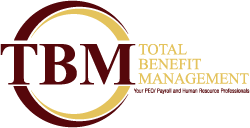- Total Benefit Management

5 Keys to Earning Sustained Loyalty from Your Employees
July 10, 2018
Why the Golden Rule Must Be Practiced in Business
July 16, 2018This article comes from the Society of Human Resource Management.
5 Myths (and Facts) About Hiring Veterans
Simply said, it makes good business sense to hire veterans. Companies that already do so uniformly speak positively about this strategy and the veterans often turn into leaders at those companies. Their loyalty, teamwork, initiative, respect, and leadership truly enable them to bring great value to the private sector. That being said, there still exist a handful of myths related to veterans and whether they can thrive after their time in the military.
Myth 1: Military skills don’t translate into the civilian workforce.
Fact: It is well documented that veterans bring extensive leadership experience, mission focus, teamwork, and initiative to the corporate environment. Besides these and other “soft” skills, however, many service members receive security clearances for the work they do, and those clearances often remain active for two years after they leave the military. Hiring a veteran with an active clearance can save employers tens of thousands of dollars and six to twelve months in background checks. Veterans also bring with them detail work histories and specialized training in a plethora of fields. In fact, military jobs are categorized into more than seven thousand occupational specialty codes, and a significant majority of them directly correlate to positions in the private sector. Often, jobs in the military are identical to those in the civilian sector, only more demanding.
Myth 2: All veterans served in combat.
Fact: While it is true that we have had significant numbers of troops deployed to combat since the terrorist attacks of September 11, 2001, that was not always the case. There are significant numbers of veterans in the workforce who left the military before 9/11 and never deployed, and there are also plenty of veterans from the post-9/11 generation who have never deployed. It is reported that about 80 percent of the jobs in the military are noncombat occupations, and those include roles found in the finance, logistics, administration, broadcasting, human resources, healthcare, and engineering sectors.
Myth 3: All veterans have PTSD and it makes them unemployable.
Fact: Due in large part to military movies and stories in our media, many think that all veterans have PTSD. However, the numbers do not bear this out. Studies conclude that 10-20 percent of post-9/11 combat veterans have PTSD, which equates to approximately five hundred thousand people. Compare that number to the 8 percent of civilians in America who will experience PTSD throughout their life (often from car accidents, violent assaults, rape, natural disasters, and growing up in traumatic environments), which is approximately twenty-six million people. You are probably already used to working with, for, or around somebody with PTSD, but just do not know it. Many veterans with PTSD, like the authors of this book, have gone through counseling for it, and are excited to be part of our nation’s workforce. We know what our triggers are and the appropriate responses, and how to manage a productive workload at the same time.
Myth 4: Veterans can only follow orders.
Fact: While service members certainly learn and adhere to the value of strictly following orders while in boot camp and officer candidate school, every veteran has had experience leading other people. With promotions come greater responsibility and more opportunities for initiative and creative problem-solving. The military prides itself on its leaders providing their intent, and then, without micromanaging, pushing the responsibility to accomplish the mission down to lower levels. This is especially true in a deployed environment where there are far too many variables for a commander to control, and even the most junior members make many decisions every day. Veterans are taught to accomplish the mission and get the job done, and that often involves an independent thought process.
Myth 5: National Guard and Reserve employees have unpredictable schedules.
Fact: The typical training schedule for those who continue to serve our country includes one weekend per month and two weeks in the summer. That training does not just pop up, and the details will usually be made available months in advance. This is also true in the case of a scheduled deployment. Members of the National Guard and Reserve do occasionally get called up to active duty with no notice in the case of natural disasters or emergency military deployments. However, these are opportunities for your employees to serve their community (and yours) when they are needed most and should be understood.
Ultimately, any company can implement an effective and impactful veteran-hiring program once it puts its mind to it. As you can see from the following case study provided by Panasonic, the opportunity to do so might be right in front of you. As Panasonic realized, hiring veterans not only solved a unique employment pain point for them but also created a pipeline for many future opportunities.
Click here to view the original article.

